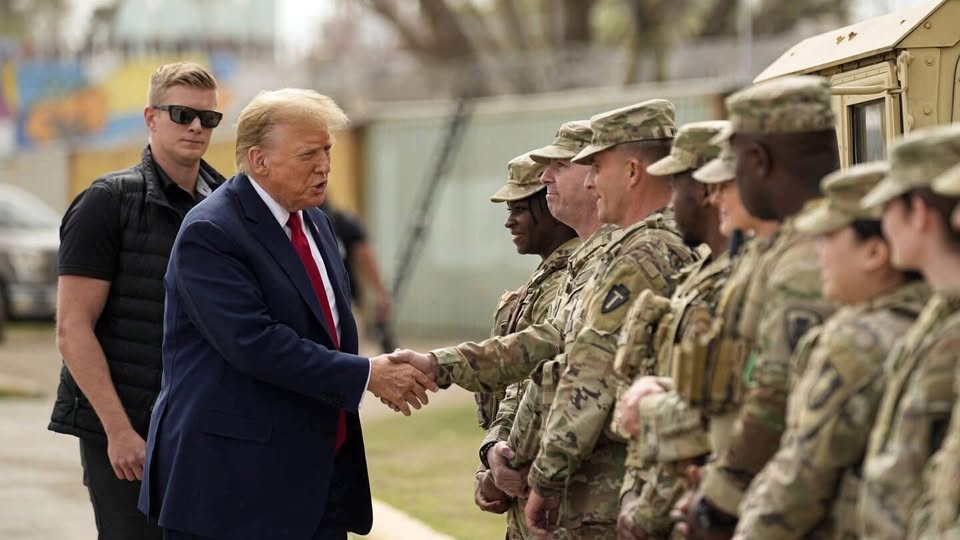Critics, however, see a very different picture. To them, uniformed troops inside immigration facilities—no matter how limited their duties—signal a dangerous normalization of military presence in civilian operations. Civil rights advocates argue that even if the Marines aren’t directly interacting with detainees, their presence alone changes the atmosphere. It introduces intimidation, blurs institutional boundaries, and risks conditioning the public to accept military involvement in domestic issues that historically belonged to civilian agencies.
For these groups, the concern isn’t just what the Marines are doing now—it’s what this deployment could pave the way for. They point to past moments in U.S. history where “temporary support” gradually evolved into more direct involvement. They also question whether overwhelmed ICE facilities should be relieved by military personnel or by policy reform, resource reallocation, or staffing improvements. Critics warn that turning to the military as a stopgap will keep happening as long as lawmakers avoid addressing the root issues buried within immigration policy itself.
Meanwhile, immigrant advocacy organizations stress the psychological impact on detainees. Many come from countries where uniforms represent oppression, violence, or authoritarian rule. Even if Marines remain in separate areas, the mere sight of military insignia can deepen fear and distrust, making already vulnerable individuals feel even more powerless. These advocates argue that the optics alone undermine the promise that U.S. immigration procedures are civilian-led, humane, and legally grounded.
Still, Pentagon officials insist the mission is tightly controlled. They say the Marines will remain in designated operational areas far removed from detainee living spaces. They will not carry out enforcement tasks, interact with migrants, or perform any duties outside logistical support. According to their statement, all activities will comply with U.S. law, including the longstanding ban on using the military for domestic law enforcement.
The Department of Homeland Security has echoed that reassurance, emphasizing that oversight will be continuous, and the mission’s scope will not expand. Both agencies describe the deployment as an emergency measure in response to a spike in migration that overwhelmed ICE facilities faster than expected. They claim this is not a policy shift—but simply triage.
Even so, political debate has exploded across the country. Some lawmakers argue that if ICE is under such strain, Congress should reassess budgeting and resources rather than leaning on the military. Others see the Marines’ involvement as a necessary step in restoring order to detention centers operating at maximum capacity.
Florida officials have responded with mixed reactions as well. Some support the reinforcement, saying the state has been forced to shoulder a disproportionate burden of immigration pressure. Others warn that military personnel in civilian detention facilities reflect a federal overreach that risks creeping into broader domestic territory.
Community groups in Miami, Tampa, and Orlando are already reporting heightened fear among immigrant families, many of whom worry the military presence signals an escalation of enforcement activity—even if none exists. Hotlines run by local nonprofits saw spikes in calls the same day the deployment was announced, with residents asking whether checkpoints or raids were imminent.
Inside ICE facilities, staff reactions appear more pragmatic. According to internal reports, many officers welcome the extra hands, especially in maintenance, communications, and data roles that have been understaffed for months. Several facilities have suffered from outdated systems, equipment failures, and chronic shortages of basic supplies. Marines stepping in to stabilize those operations may offer much-needed relief in a system at its breaking point.
Meanwhile, Marines arriving in Florida have been given detailed briefings outlining their limits, their responsibilities, and the legal boundaries they must respect. Their early assignments include upgrading radio systems, reorganizing storage logistics, repairing equipment, and assisting with transportation coordination between overcrowded facilities. So far, there have been no reports of direct interaction with detained individuals.
But the tension surrounding the deployment isn’t going away. Many Americans see this moment as a test case—one that will determine whether military support becomes a recurring tool of immigration enforcement infrastructure. Others believe the real issue has nothing to do with the Marines and everything to do with the escalating pressures on a system that’s been overburdened for decades.
Political analysts warn that the longer the federal government leans on temporary fixes, the harder it becomes to confront the structural problems behind them. Without addressing policy gaps, staffing shortages, facility conditions, and the legal maze that defines the immigration system, deployments like this one risk becoming routine.
For now, the Pentagon and Homeland Security promise strict oversight and a limited mission. How long those reassurances hold—and whether this deployment remains a one-time exception or evolves into a precedent—depends on what comes next in Washington.
As the Marines settle into their roles in Florida, one thing is clear: this isn’t just a logistical move. It’s a symbolic one. And symbols—especially in today’s political climate—rarely fade quietly.

